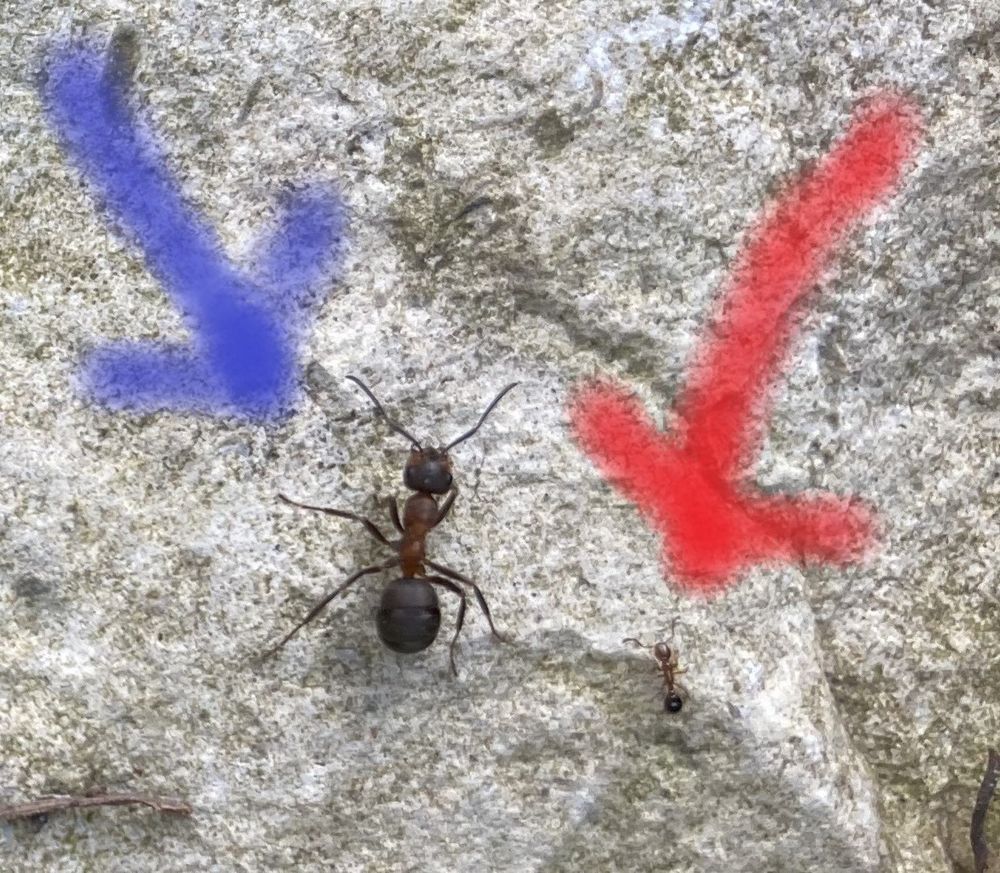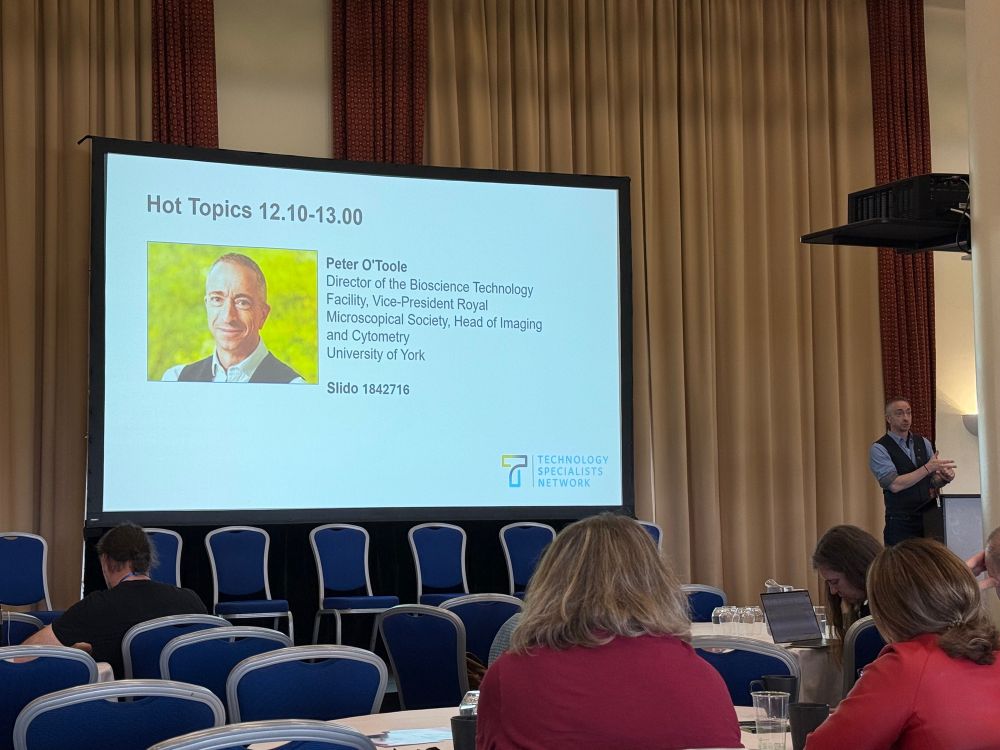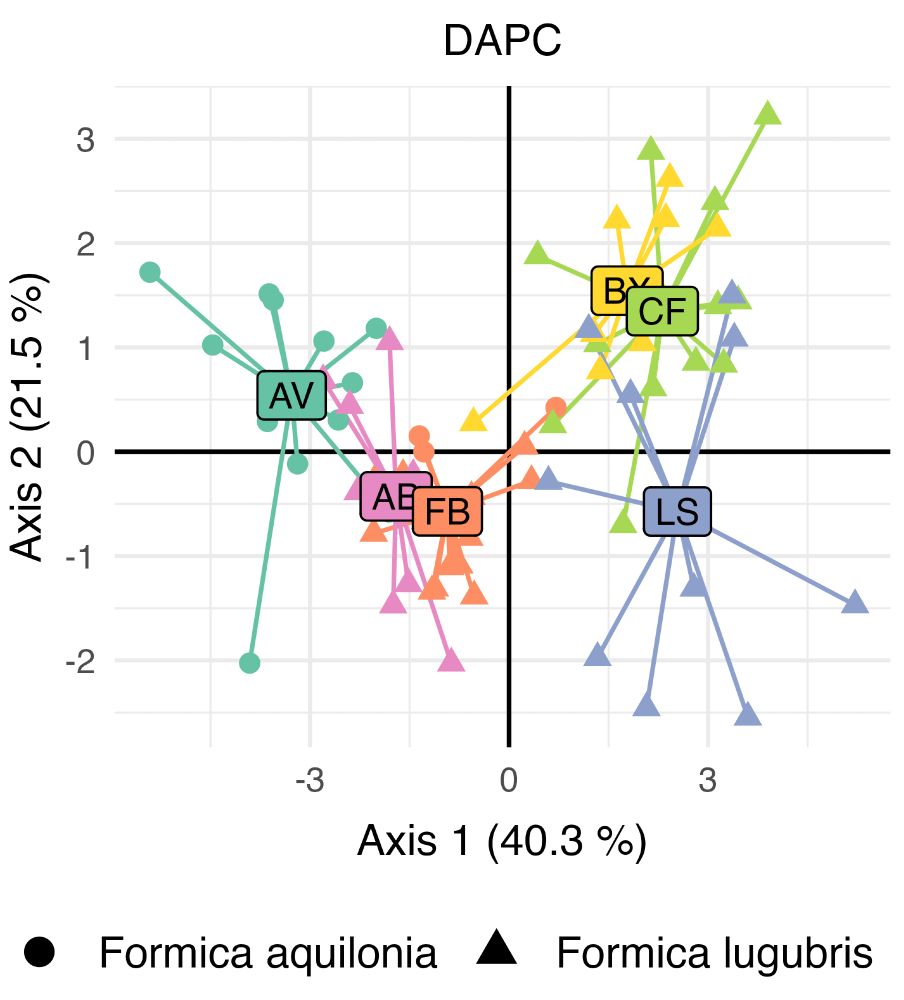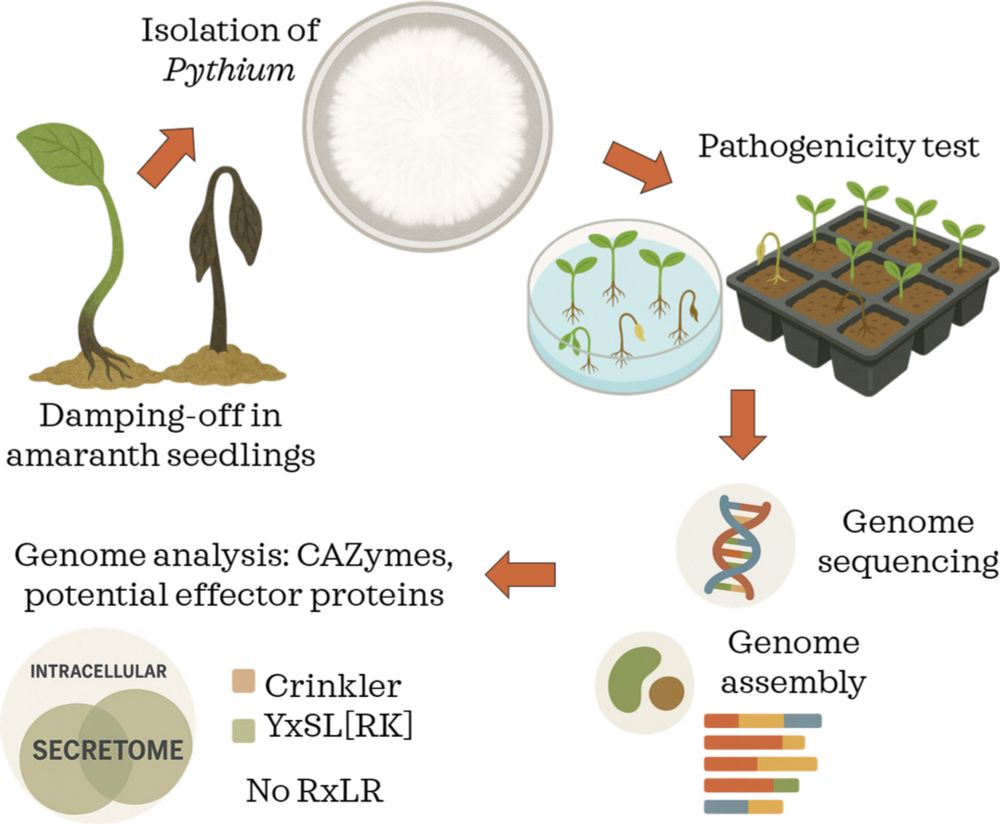
A large wood ant, with a dull black gaster and head, and dull brown thorax, is on a pale stone background, and indicated by a blue arrow. Next to it a much smaller ant with a shiny back gaster and shiny brown head and thorax is indicated by a red arrow. The blue arrow at is the wood ant Formica lugubris and the red arrow at is the shining guest ant Formicoxenus nitidulus.
Did you know about these tiny shiny ants (red arrow) living with wood ants (blue arrow)? They are Shining Guest Ants (Formicoxenus) and we have recently discovered that a wood ant nest can be home to several genetically distinct colonies of these 'guests'! onlinelibrary.wiley.com/share/author... 1/5
07.05.2025 13:49 — 👍 43 🔁 14 💬 2 📌 1

Another great TSN meeting. Very encouraging to see how active the UK RTP community is. @ukri.org @uk-itss.bsky.social @tech-commit.bsky.social
30.04.2025 11:46 — 👍 1 🔁 0 💬 0 📌 0

DAPC scatter plot showing clusters of ant genotypes in six populations of shining guest ants in England and Scotland.

Stacked bar chart showing genetic ancestry (from STRUCTURE analysis) of populations of shining guest ants across seven different sites in England and Scotland.
An interesting and important paper just out, that the group contributed significantly to, on the fascinating shining guest ant and its genetic diversity in English (RHS on plots) and Scottish (LHS on plots) populations. Led by @elvarobinson.bsky.social.
onlinelibrary.wiley.com/share/author...
30.04.2025 08:53 — 👍 5 🔁 0 💬 0 📌 1




